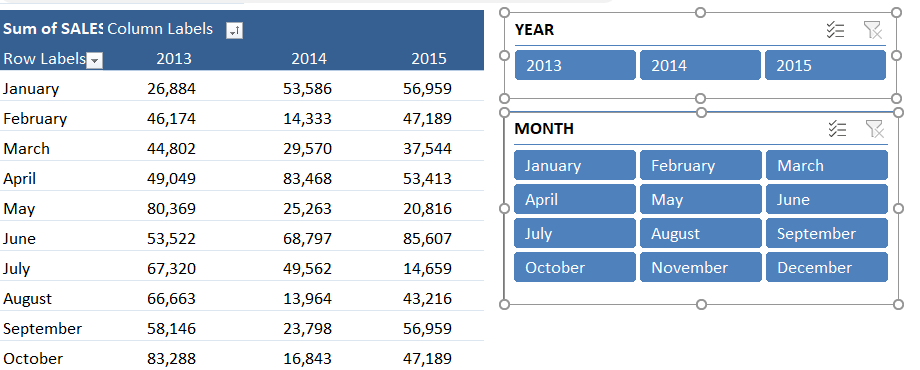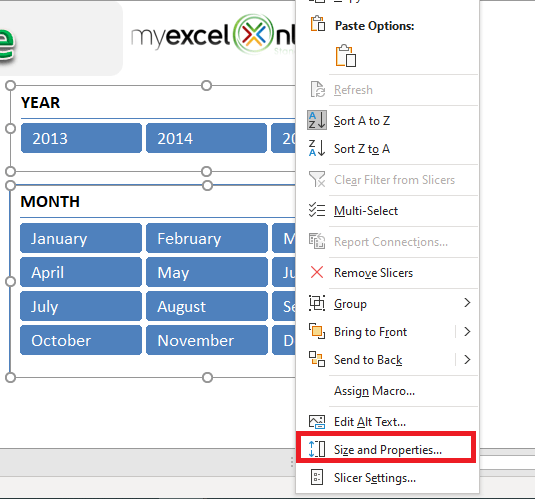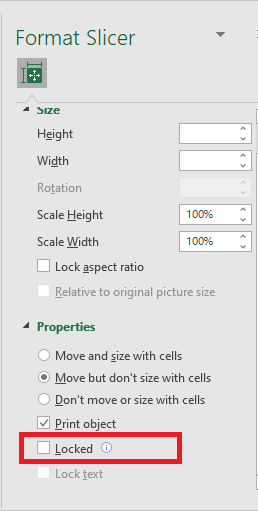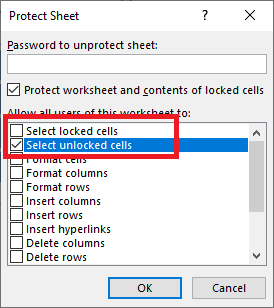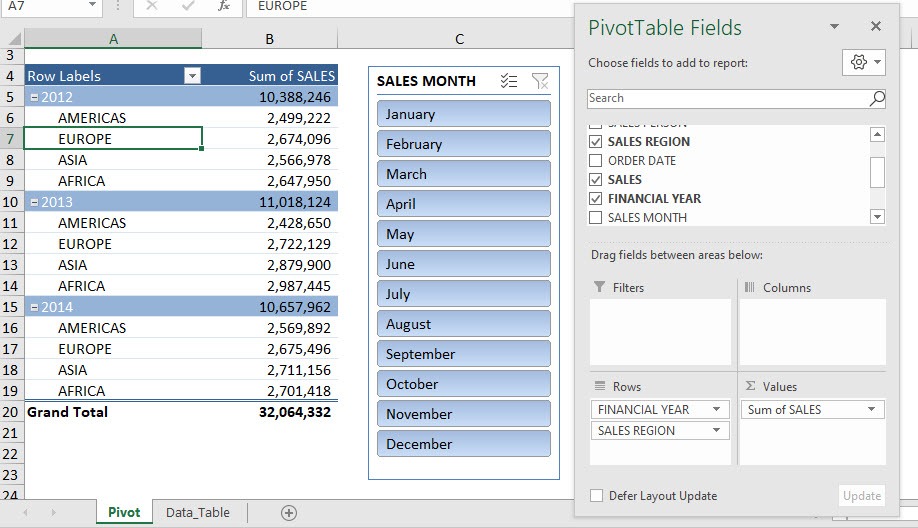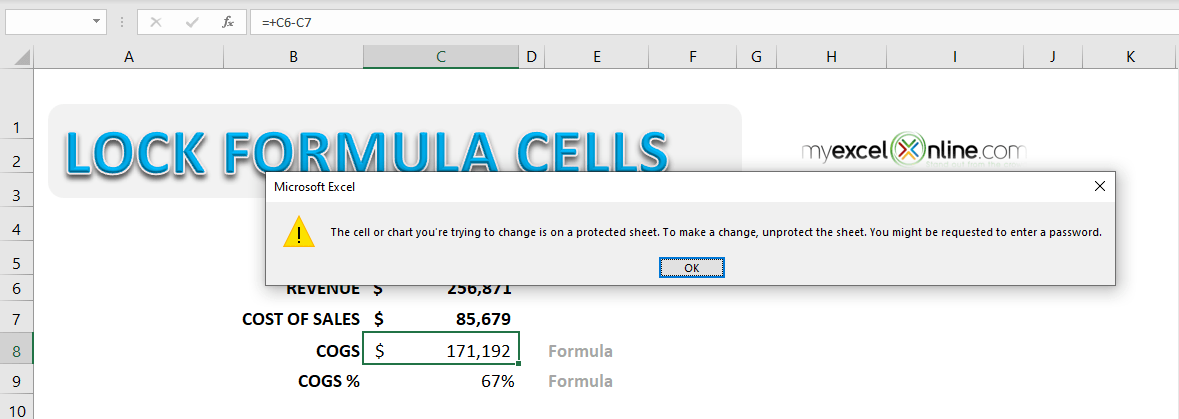Sometimes when you are sharing an Excel Pivot Table with your colleagues you do not want the other user(s) to mess with your Pivot Table layout and format. What you can do is learn how to lock pivot table and only allow the user(s) to select the Slicers, making your report interactive and secure from Excel novices like your boss 🙂
Key Takeaways:
- To lock a Pivot Table in Excel, users should select and unlock the Slicers by right-clicking and choosing Size & Properties, then unchecking the Locked box. This is to allow users to interact with the Slicers even after the sheet protection is enabled.
- Sheet protection is applied by going to Review > Protect Sheet on the ribbon menu. While enabling protection, it is essential to uncheck ‘Select Locked Cells’ and check ‘Select Unlocked Cells.’ Users can also set a password for added security, though this is optional.
- Once the protections are in place with the correct settings, the Pivot Table layout and format are secured, preventing other users from altering them unintentionally. The sheet remains interactive through the use of unlocked Slicers, balancing security with functionality.
Here is a step-by-step tutorial on How to Lock Pivot Table but not the Slicers:
STEP 1: Click on a Slicer, hold the CTRL-key and select the other Slicers.
STEP 2: Right-click on a Slicer and select Size & Properties.
STEP 3: In the Format Slicer dialog box, Select Properties, “uncheck” the Locked box.
STEP 4: Go to the ribbon menu and select Review > Protect Sheet.
STEP 5: “Uncheck” the Select Locked Cells and “Check” the Select Unlocked Cells.
STEP 6: Enter a password (optional) and press OK.
STEP 7: Re-enter the password and press OK.
Download workbook – unlocked Lock-the-workbook-Unlocked.xlsx
Download workbook – lockedLock-the-workbook-Locked.xlsx (Password to unlock: myexcelonline)
This completes the tutorial on how to lock pivot table format and how to lock slicers in Excel!
Table of Contents
Overcoming Common Issues with Locked Pivot Tables
Allowing Filtering and Slicer Connections
Making sure other users can filter pivot table data without tampering with its structure can be tricky. To allow filtering and use of slicers while keeping your pivot tables locked, simply adjust the slicer’s properties. You’ll want to right-click on the slicer, navigate to ‘Size and Properties’, and deselect the ‘Locked’ checkbox. This way, users can interact with the slicers without changing the core data or structure of your pivot tables.
Refreshing Data Without Unprotecting the Entire Sheet
Refreshing pivot table data without exposing your entire spreadsheet to potential unwanted changes might seem challenging, but there’s an efficient workaround. You can create a macro that briefly unprotects the sheet, refreshes the pivot table, and then immediately reprotects the sheet. This enables a refresh without permanently removing the protection. Here’s a macro example for you to follow:
Sub UnprotectRefresh() On Error Resume Next With ActiveSheet .Unprotect Password:="[YourPasswordHere]" .PivotTables(1).RefreshTable .Protect Password:="[YourPasswordHere]", AllowUsingPivotTables:=True End With End Sub
Just replace [YourPasswordHere] with your actual password. This handy script ensures your data is consistently up-to-date, while keeping the integrity of your protected sheet intact. Always remember to backup your data before running any macros.
Maintaining Accessibility in Secure Spreadsheets
Best Practices for Sharing Protected Workbooks
When sharing workbooks that contain protected pivot tables, communication and education are key. Start by informing your team why the protection is in place, stressing the importance of data integrity. Offer guidelines for proper use and ensure everyone understands the scope of their access.
Here are some best practices you can follow:
- Always provide a brief training session or documentation on how to interact with the protected elements, especially if your colleagues aren’t familiar with Excel’s protection features.
- Clarify which cells, tables, or sheets are locked and why, to prevent confusion and frustration.
- If you’re using passwords, share them securely with authorized personnel only, and consider using password management tools to keep track of them.
- Regularly review and update access permissions, especially when there are changes in team structures or responsibilities.
- Encourage feedback on the protection mechanisms in place. Sometimes end users identify glitches or suggest improvements you might not have considered.
By applying these practices, you ensure seamless collaboration while maintaining the security of the workbook content.
Training Teams to Work with Protected Pivot Tables
Training is crucial when you’ve locked down pivotal features within Excel. With protected pivot tables, you want everyone on your team not only to understand the ‘how’ but also the ‘why’ behind the protections.
Start with an interactive session, where you can demonstrate how to interact with the pivot tables. Focus on the operations they can perform, such as sorting or filtering, while explaining the actions they should avoid to maintain the data’s integrity.
Here’s a rundown of what your training might include:
- An overview of the pivot table features that remain accessible despite the protection.
- Case-by-case instructions for tasks they might need to do, such as refreshing data through a designated macro.
- A clear explanation of the risks involved with unprotected sheets to emphasize the importance of these measures.
- Hands-on practice scenarios to let team members experience the functionality of protected pivot tables.
Remember to create a supportive environment where it’s okay to ask questions. The end goal is to empower your team to work effectively while safeguarding the data’s integrity.
Troubleshooting Common Locking Issues
Handling Locked Cells Error Messages
Now, if you’ve ever run into a brick wall of an error message when trying to tweak your pivot table, you’re not alone. This typically means the cell you’re trying to change is locked and the sheet is protected. To overcome this snag, you’ll need to unlock the cells that form the pivot table before slapping on that sheet protection – an essential step that is often overlooked.
Here’s a lifehack: Go to the Review tab, click on Unprotect Sheet, make your changes, and don’t forget to re-engage the protection. This way, your pivot table is the fort it’s meant to be, complete with a drawbridge that only lowers when you say so.
Resolving Filter and Slicer Limitations on Protected Sheets
We’ve all felt the pinch when filters and slicers get grounded on a sheet under lock and key. But fear not, because there’s a workaround that lets you filter through data without a hitch. First, ensure the ‘Use PivotTable & PivotChart’ option is ticked when setting up sheet protection. Next, remember to unlock the specific cells linked to your slicers and pivot charts before activating that protective shield. Doing so keeps the essentials at your fingertips while keeping the rest of your data under wraps.
Sometimes it’s the simple oversights that trip us up—like forgetting to uncheck the ‘Locked’ option under the slicer’s ‘Size and Properties’ menu in the Format Control dialog box. A quick double-check on these critical settings will save you countless head-desk moments.
Enhancing Data Security Beyond Locking
Combining Locking with Other Excel Security Features
To turn your Excel spreadsheet into Fort Knox, don’t stop at locking down your pivot tables. Combine that with other security features like password protection for opening the workbook, encrypting the file with a password for modifying it, and even using Information Rights Management (IRM) to set permissions.
You can also assign passwords to protect specific workbook structures or windows. This layered security approach ensures each layer is guarded, deterring all but the most determined infiltrators. Essentially, you’re creating a security cocktail that requires multiple keys to unlock, making unauthorized access virtually impossible.
And remember, it’s about balance. While you want to protect your data, you also don’t want to hinder productivity, so tailor these features to find that sweet spot between lockdown and fluid data analysis.
Regularly Updating and Maintaining Secure Spreadsheets
Keeping your spreadsheets secure isn’t a one-and-done deal; it requires regular maintenance and updates. Consistently review and update your protection settings, especially as your data changes or as you introduce new elements to your workbook. It’s also wise to regularly change passwords and restrict access to pivot tables and sensitive data to those who need it. Periodic audits of who has access to what ensure that over time, you won’t have old permissions hanging around like ghosts in the machine.
Furthermore, keeping your software up to date is crucial — newer versions of Excel might offer improved security features or patch vulnerabilities that could be exploited. In essence, treat your secure spreadsheets like a garden: it needs regular tending to flourish and stay pest-free.
FAQs on Protecting Excel Pivot Tables
How Do I Enable Filters on a Protected Sheet with a Pivot Table?
To enable filters on a protected sheet with a pivot table, follow these steps:
- Go to the ‘Review’ tab on the Ribbon and click ‘Protect Sheet’.
- In the dialog box that appears, ensure the ‘Use PivotTable & PivotChart’ option is checked.
- Set a password if desired and click ‘OK’ to activate sheet protection.
Now, users can apply filters within the pivot table even while the sheet remains protected. Keep your password handy in case you need to make further changes.
Can I Lock the Pivot Table but Not the Slicers in Excel?
Yes, you can lock the pivot table while keeping the slicers unlocked in Excel. Right-click on the pivot table, select ‘Format Cells’, and tick the ‘Locked’ option. Then, right-click on the slicers, choose ‘Size and Properties’, and uncheck the ‘Locked’ option. Finally, protect the sheet under the ‘Review’ tab to enforce the settings. This method allows slicer use while the pivot table remains locked.
Is It Possible to Apply Different Protection Levels to Multiple Pivot Tables in One Workbook?
Absolutely, you can apply different protection levels to multiple pivot tables within a single Excel workbook. You’ll do this by adjusting the protection settings individually for each pivot table and its related cells or slicers before protecting the entire worksheet or workbook. Ensure you specify which pivot table elements users can interact with by selectively locking or unlocking them. It’s a detail-oriented process but it gives you granular control over the accessibility of each pivot table. Remember to thoroughly test the protections to confirm they work as intended for each pivot case.
John Michaloudis is a former accountant and finance analyst at General Electric, a Microsoft MVP since 2020, an Amazon #1 bestselling author of 4 Microsoft Excel books and teacher of Microsoft Excel & Office over at his flagship MyExcelOnline Academy Online Course.

